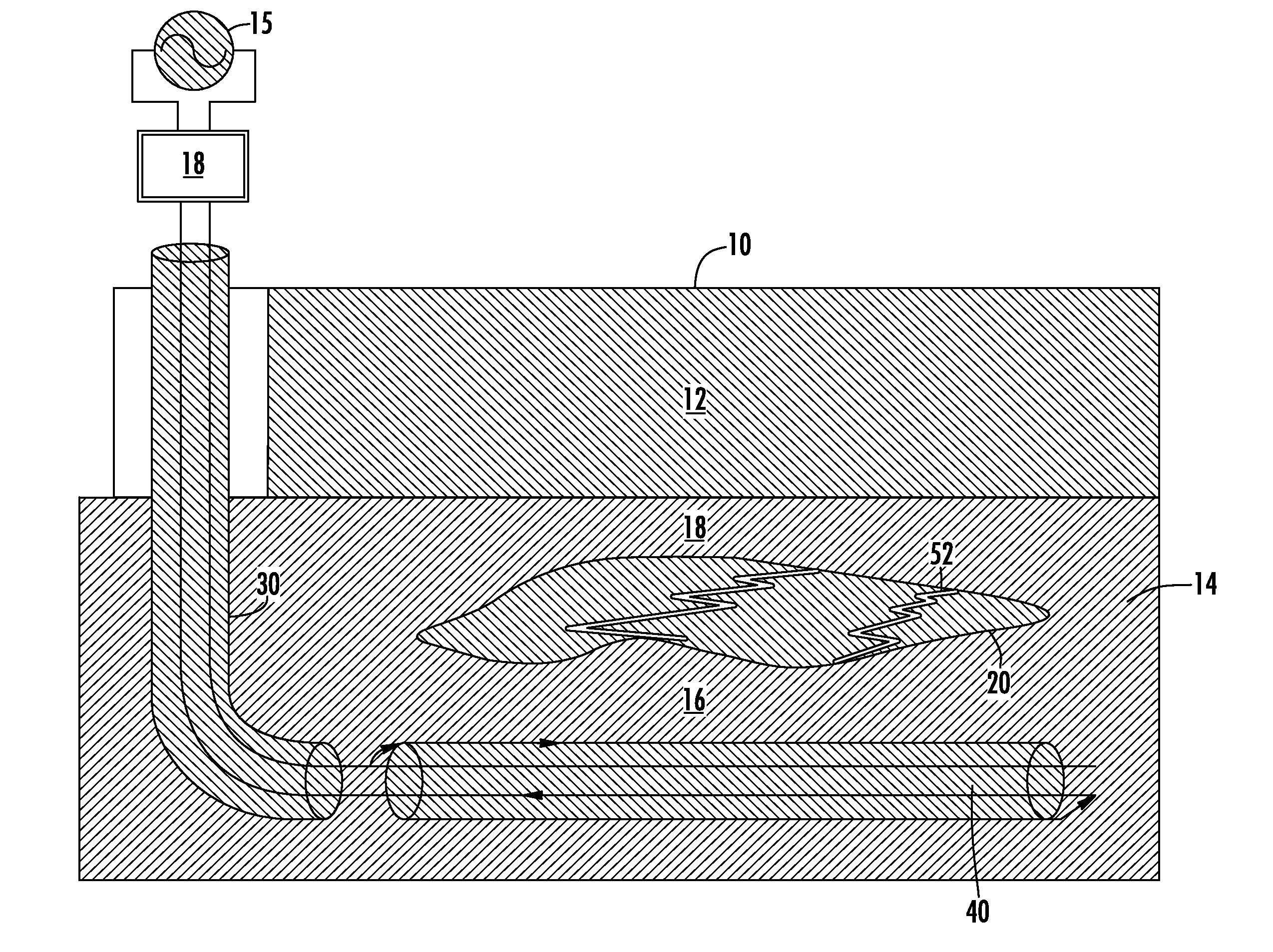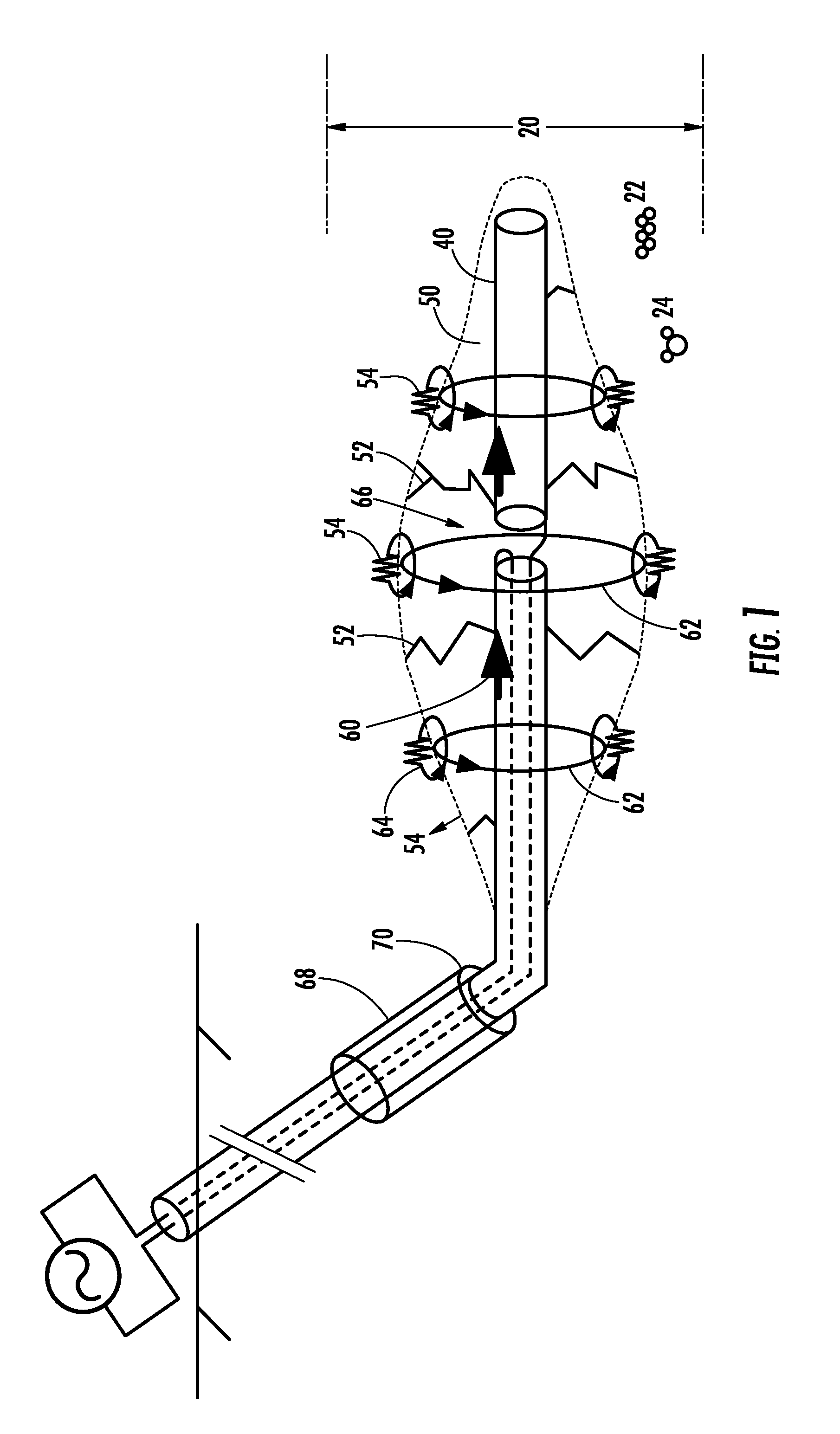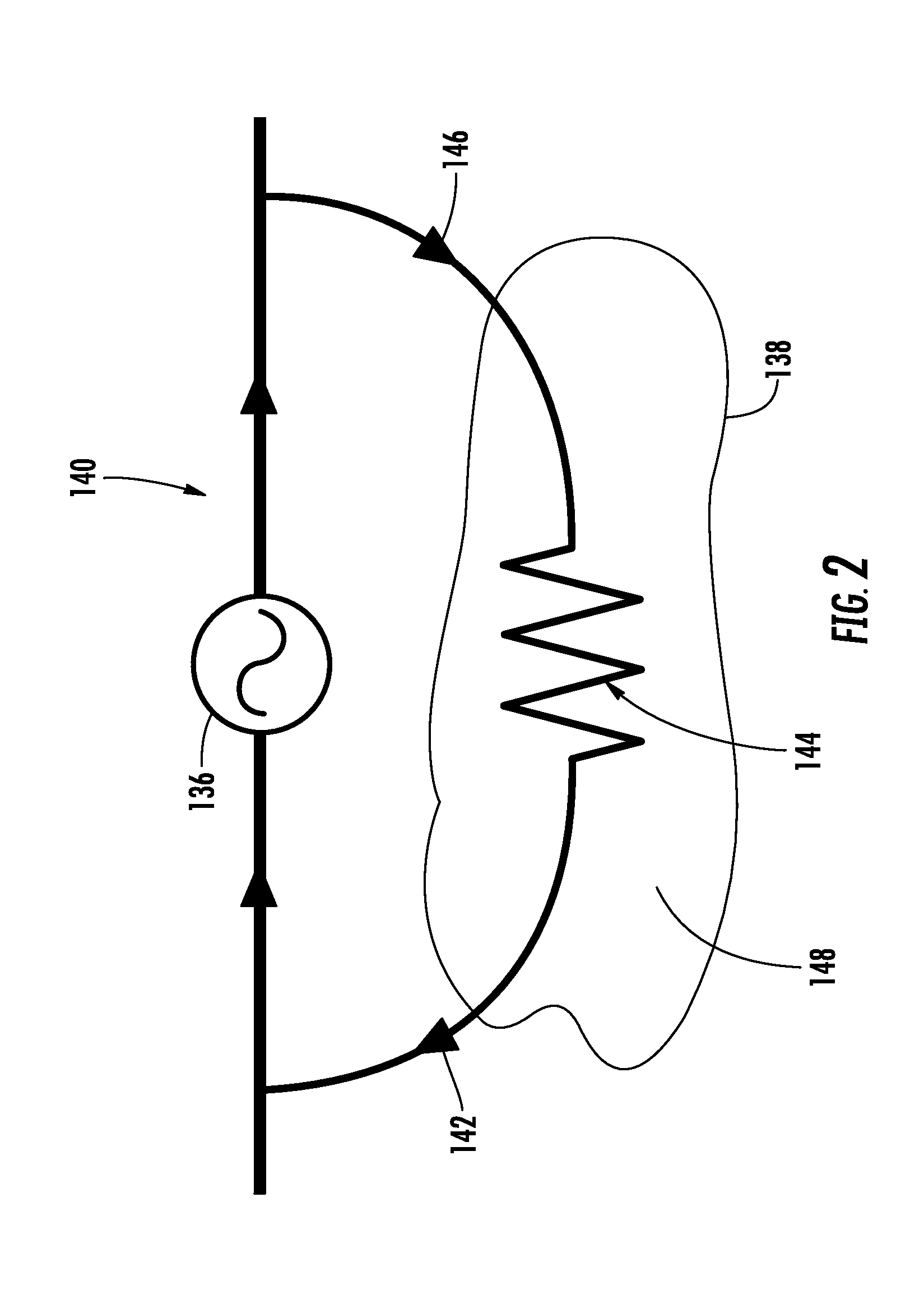Electromagnetic Heat Treatment Providing Enhanced Oil Recovery
a heat treatment and electromagnetic technology, applied in the direction of fluid removal, insulation, borehole/well accessories, etc., can solve the problems of difficult transportation to market, high cost of processing into gasoline, diesel fuel, other products, and difficult to meet the needs of industrial production and other problems, and achieve the effects of reducing and increasing the cost of production
- Summary
- Abstract
- Description
- Claims
- Application Information
AI Technical Summary
Problems solved by technology
Method used
Image
Examples
Embodiment Construction
[0024]The subject matter of this disclosure will now be described more fully, and one or more embodiments of the invention are shown. This invention may, however, be embodied in many different forms and should not be construed as limited to the embodiments set forth herein. Rather, these embodiments are examples of the invention, which has the full scope indicated by the language of the claims.
[0025]Referring to FIG. 1 an antenna 40 is depicted below surface 10. Antenna 40 may be a linear structure such as a dipole, coaxial or sleeve dipole or a dipole antenna including a folded or loop circuit to convey an RF electric current 60 in a closed circuit. In this embodiment, SAGD well piping 30 is utilized as the antenna. A conductive choke sleeve 68, for example a metal pipe, may be connected to the antenna 40 at conductive bond 70 to stop electric currents from reaching the surface. Antenna 40 is electrically connected to power source 15. Antenna 40 may include a driving discontinuity ...
PUM
 Login to View More
Login to View More Abstract
Description
Claims
Application Information
 Login to View More
Login to View More - R&D
- Intellectual Property
- Life Sciences
- Materials
- Tech Scout
- Unparalleled Data Quality
- Higher Quality Content
- 60% Fewer Hallucinations
Browse by: Latest US Patents, China's latest patents, Technical Efficacy Thesaurus, Application Domain, Technology Topic, Popular Technical Reports.
© 2025 PatSnap. All rights reserved.Legal|Privacy policy|Modern Slavery Act Transparency Statement|Sitemap|About US| Contact US: help@patsnap.com



